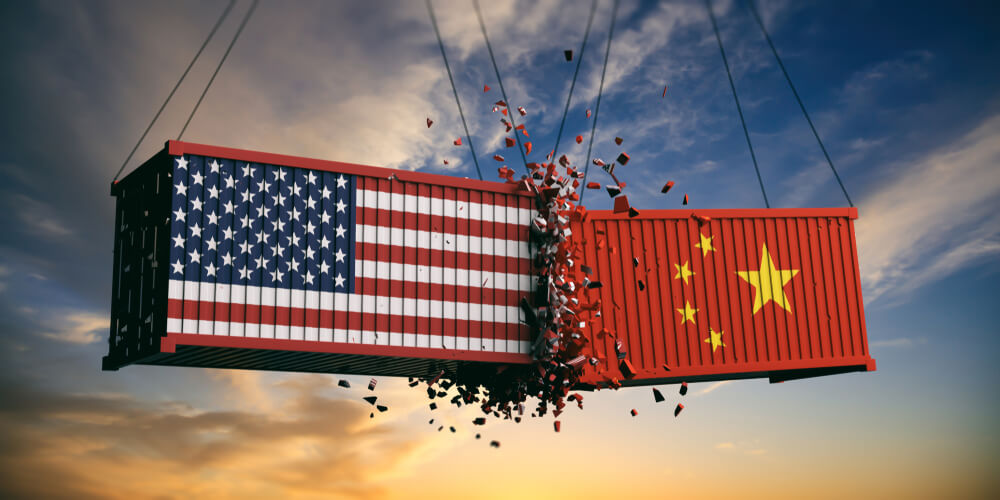China and the United States imposed new tariffs on each other’s goods Monday and Beijing accused Washington of bullying, giving no sign of compromise in an intensifying battle over technology that is weighing on global economic growth.
U.S. regulators went ahead with a planned 10 percent tax on a $200 billion list of 5,745 Chinese imports including bicycles and furniture. China’s customs agency said it responded at noon by beginning to collect taxes of 5 or 10 percent on a $60 billion list of 5,207 American goods, from honey to industrial chemicals.
The conflict stems from U.S. President Donald Trump’s complaints Beijing steals or pressures foreign companies to hand over technology.
American officials say Chinese plans for state-led development of global competitors in robotics and other technologies violate its market-opening obligations and might erode U.S. industrial leadership.
China’s leaders offered to narrow their politically sensitive, multibillion-dollar trade surplus with the United States by purchasing more natural gas and other American exports. But they have rejected pressure to change industry plans the communist leadership sees as a path to prosperity and global influence.
Monday’s tariff hike follows a report by The Wall Street Journal that Chinese officials pulled out of a meeting to discuss possible talks proposed by Washington. The Chinese government had given no public indication whether it would accept the invitation.
Envoys last met Aug. 22 in Washington but reported no progress.
With no settlement in sight, forecasters say the conflict between the two biggest economies could trim global growth through 2020.
On Monday, the ratings agency Fitch cut its forecasts for next year’s Chinese and global economic growth by 0.1 percentage points to 6.1 percent and 3.1 percent, respectively.
“The trade war is now a reality,” said Fitch’s chief economist, Brian Coulton, in a report. “The downside risks to our global growth forecasts have also increased.”
Earlier, the two sides imposed 25 percent penalties on $34 billion of each other’s goods in July and another $16 billion in August. Business groups say American companies also report Chinese regulators are starting to disrupt their operations through slower customs clearance and more environmental and other inspections.
The first American tariffs targeted goods Washington said benefit from improper Chinese industrial policies. American regulators tried to limit the public impact by focusing on industrial machinery and components, but the latest $200 billion list includes bicycles, wooden furniture and other consumer goods.
Chinese regulators have tried to cushion the blow on their own economy by targeting American goods such as soybeans, natural gas, fruit, whisky and automobiles that are available from Europe, Latin America and other Asian countries.
Trump threatened last week to add $267 billion in Chinese imports to the target list if Beijing retaliated for the latest U.S. taxes. That would cover nearly everything China sells to the United States.
On Monday, the Chinese government accused the Trump administration in a report of “trade bullyism” and of preaching “economic hegemony.”
The toughly worded report said Beijing wants a “reasonable solution” but gave no indication of possible concessions.
It affirmed China’s stance that it is a developing country, a claim that rankles Washington, Europe and other trading partners.
They point to China’s status as a major manufacturer and a growing competitor in smartphones and other technology. They say Beijing is no longer entitled to concessions it was granted when it joined the World Trade Organization in 2001, such as the right to limit access to its finance, energy and other markets.
Chinese leaders have tried without success to recruit as allies Germany, France, South Korea and other trading partners that echo U.S. complaints about Chinese market barriers and industry plans but criticize Trump’s approach.
The Trump administration has “has brazenly preached unilateralism, protectionism and economic hegemony, making false accusations against many countries and regions, particularly China, intimidating other countries through economic measures such as imposing tariffs, and attempting to impose its own interests on China through extreme pressure,” the official Xinhua News Agency said.
Chinese leaders have announced changes this year including tariff cuts and plans to end ownership limits in their auto industry. But businesspeople who have met senior planners say they express no willingness even to discuss changes to technology development plans.
As the fight intensifies, China is running out of U.S. imports for retaliation.
Imports of American goods last year totaled $153.9 billion while the United States bought Chinese goods worth $429.8 billion, according to Chinese customs data. Monday’s increase leaves Beijing with about $40 billion of goods for penalties while the Washington has almost $200 billion.
© The Associated Press. All rights reserved.




